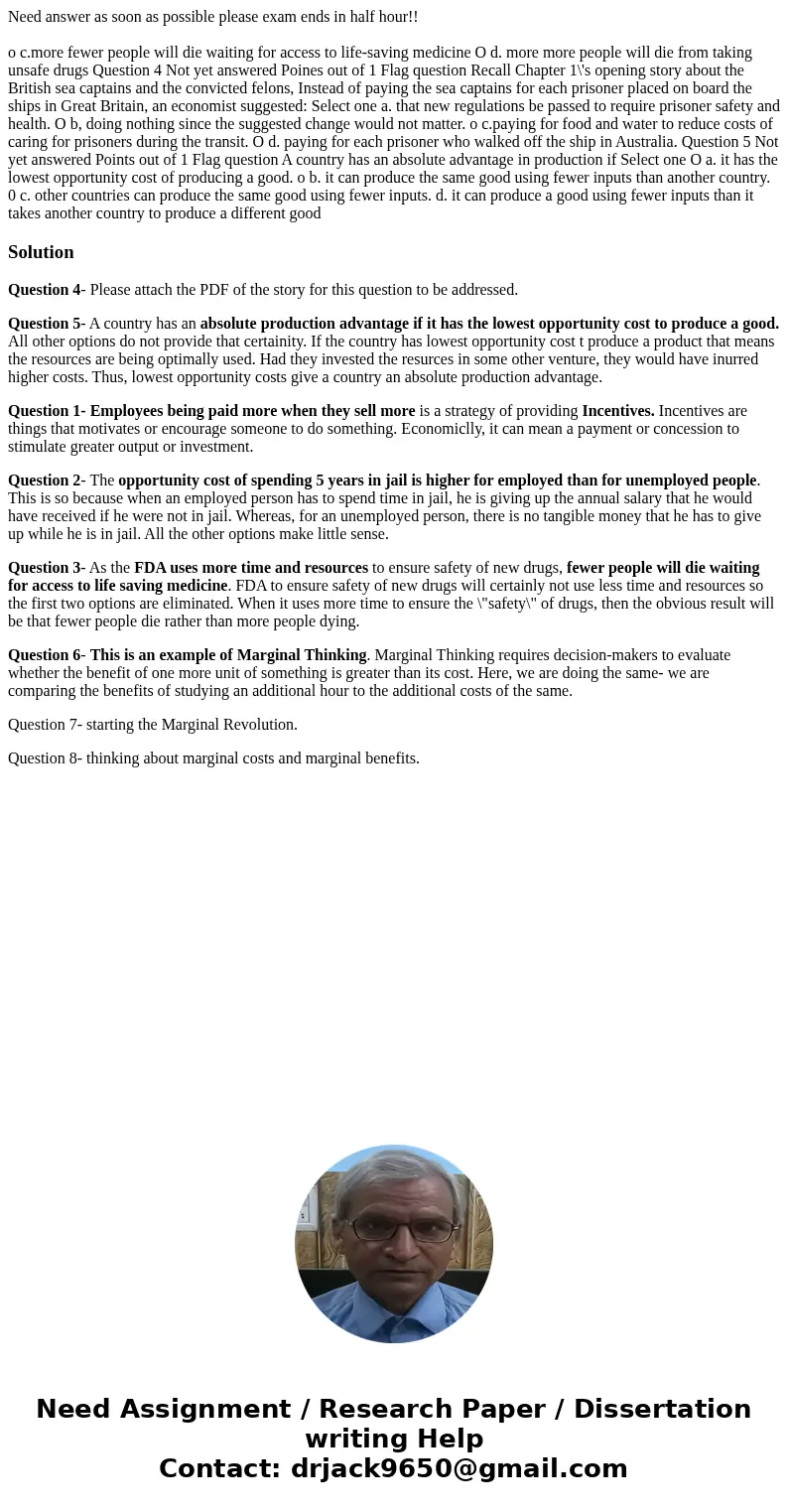Need answer as soon as possible please exam ends in half hou
Solution
Question 4- Please attach the PDF of the story for this question to be addressed.
Question 5- A country has an absolute production advantage if it has the lowest opportunity cost to produce a good. All other options do not provide that certainity. If the country has lowest opportunity cost t produce a product that means the resources are being optimally used. Had they invested the resurces in some other venture, they would have inurred higher costs. Thus, lowest opportunity costs give a country an absolute production advantage.
Question 1- Employees being paid more when they sell more is a strategy of providing Incentives. Incentives are things that motivates or encourage someone to do something. Economiclly, it can mean a payment or concession to stimulate greater output or investment.
Question 2- The opportunity cost of spending 5 years in jail is higher for employed than for unemployed people. This is so because when an employed person has to spend time in jail, he is giving up the annual salary that he would have received if he were not in jail. Whereas, for an unemployed person, there is no tangible money that he has to give up while he is in jail. All the other options make little sense.
Question 3- As the FDA uses more time and resources to ensure safety of new drugs, fewer people will die waiting for access to life saving medicine. FDA to ensure safety of new drugs will certainly not use less time and resources so the first two options are eliminated. When it uses more time to ensure the \"safety\" of drugs, then the obvious result will be that fewer people die rather than more people dying.
Question 6- This is an example of Marginal Thinking. Marginal Thinking requires decision-makers to evaluate whether the benefit of one more unit of something is greater than its cost. Here, we are doing the same- we are comparing the benefits of studying an additional hour to the additional costs of the same.
Question 7- starting the Marginal Revolution.
Question 8- thinking about marginal costs and marginal benefits.

 Homework Sourse
Homework Sourse